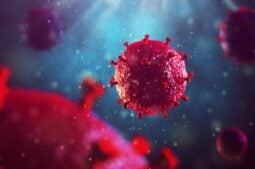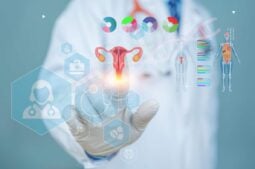
Artificial intelligence has steadily evolved in the field of assisted reproduction, with the goal of minimizing uncertainty for patients whose main objective is achieving a positive pregnancy result. In this blog, we’ll explore the latest developments in AI, the importance of selecting the right embryos and gametes, and how these innovations are shaping outcomes.
Why is embryo selection important?
Embryo selection is a critical step aimed at identifying embryos with the highest implantation potential, reducing the risk of multiple pregnancies, genetic abnormalities, and the number of embryos transferred, among other factors.
Accurate gamete and embryo selection is essential for the success of assisted reproductive treatments. The study “Predicting time to live Birth with Deep Learning embryo Ranking: a novel multiple imputation approach”, led by researchers at IVI Valencia, demonstrates how AI can reduce the time to a successful live birth by as much as 7%.
As explained by Dr. Marcos Meseguer, Global Director of Embryology at IVI RMA and study coordinator: “Our study, involving a substantial sample of 70,000 embryos, allows for superior outcomes in less time with greater certainty. This significantly reduces both treatment duration and emotional stress for many patients”.
For patients, every advancement in artificial intelligence is a source of hope—and a positive reinforcement to continue their journey with optimism. When applied to embryo selection, AI can increase pregnancy rates by 5%, and up to 7% in cumulative rates, according to the study “Undisturbed culture: a clinical examination of this culture strategy on embryo in vitro development and clinical outcomes”.
Moreover, the impact of embryo selection goes even further. As Dr. Meseguer notes: “Our research revealed that in 80% of cases where embryologists selected embryos, AI provided an alternative with a better prognosis. This data underscores that AI’s impact on assisted reproduction has only just begun”.
Why is gamete selection important?
Selecting the oocytes and sperm with the most optimal profiles is key to improving the chances of a successful pregnancy. It also helps prevent the transmission of genetic diseases and enhances reproductive outcomes.
At IVI, several research initiatives are driving innovation, including the study “AI Powered Oocyte Assessment”, which analyzes more than 3,000 oocytes and 300 semen samples using AI to support embryologists in the lab.
“When applied to predict gamete quality, AI greatly supports fertility preservation strategies and egg donation programs by determining the optimal number of eggs required for specific procedures. AI can aid embryologists in two significant ways: firstly, by analyzing sperm movement and morphology in real-time to identify sperm with the highest fertilization potential; secondly, by evaluating egg quality to select the highest-quality oocytes”, explains Professor Laura Rienzi, Scientific Director at IVI RMA Italy.
New advances in ovarian stimulation
Ovarian stimulation is a carefully managed process aimed at maturing multiple follicles at once to retrieve a larger number of oocytes — whether for fertilization or cryopreservation, depending on the treatment plan.
AI has promising applications in ovarian stimulation protocols, as both the quality and quantity of retrieved oocytes are crucial to the success of assisted reproductive technologies.
Until now, there had been no standardized evaluation method focused specifically on the role of oocytes. This has led to the development of new tools that, with AI assistance, allow for more precise assessment.
At this point, one such study “Machine learning tool for predicting mature oocyte yield and trigger day from start of stimulation: towards personalized treatment”, published in Reprod Biomed Online, offers patients tailored information about expected oocyte yield, stimulation duration, and the likely timing of egg retrieval.
Among the key advances is personalized treatment, this AI-powered tool uses deep learning algorithms to analyze data from previous ovarian stimulation cycles, enabling accurate predictions tailored to each individual. This helps physicians adapt stimulation protocols to the patient’s unique characteristics, ultimately improving success rates.
It also reduces unnecessary clinic visits by accurately predicting ovulation trigger timing and oocyte count—saving time, effort, and alleviating the stress often associated with fertility treatments.
“Another significant contribution is improved clinical decision-making facilitated by precise preliminary information about the stimulation cycle. This allows more informed and timely decisions, increasing accuracy and reducing bias compared to traditional methods, which can vary by doctor or clinic. AI offers consistent, data-driven predictions, significantly enhancing overall treatment outcomes,” concludes Professor Rienzi.





Comments are closed here.